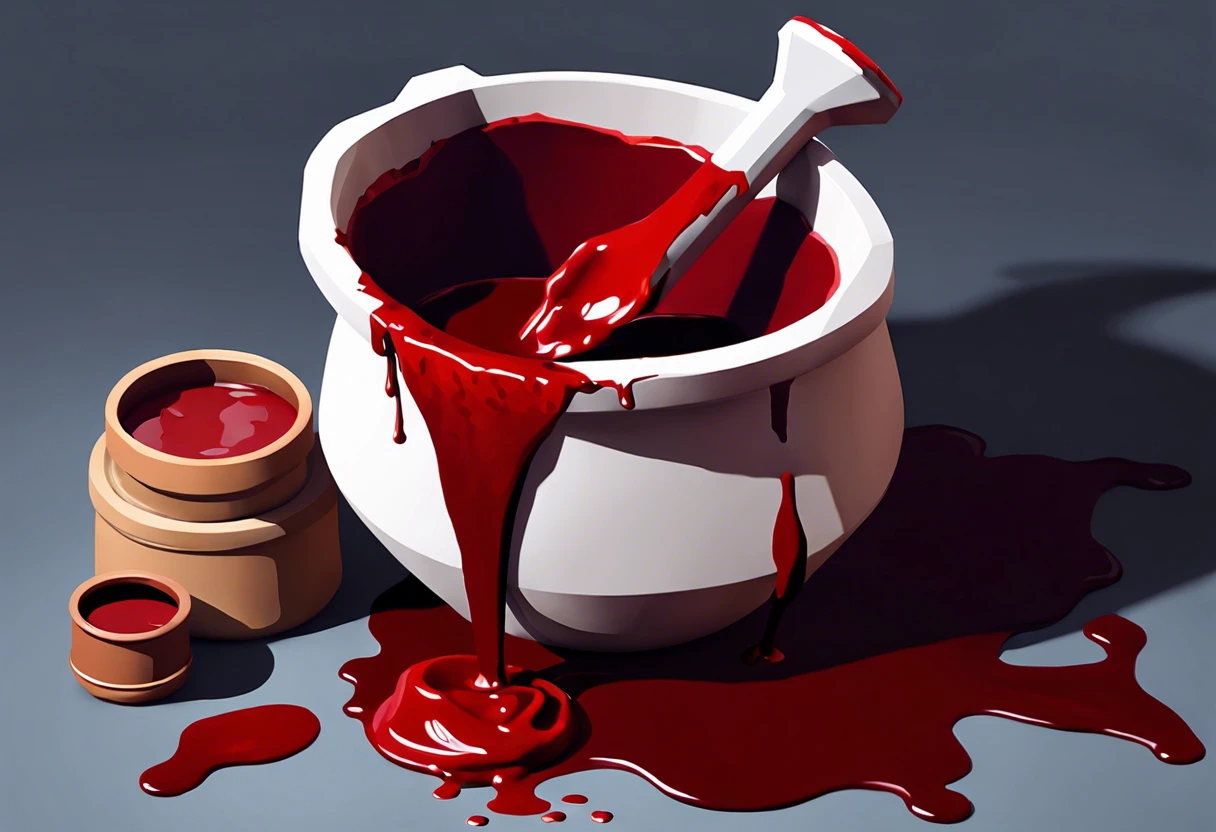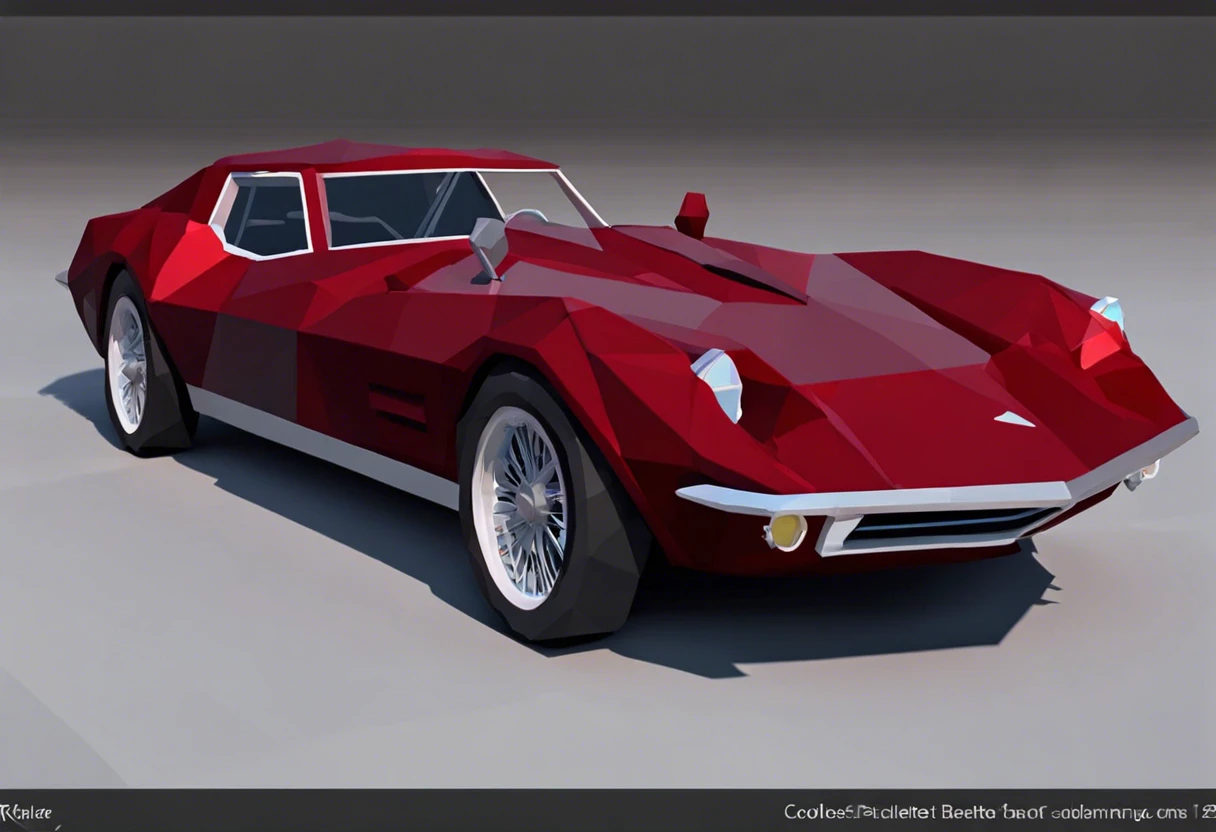How Can You Make Red Paint Darker?
Published on: May 18, 2025 | Last Updated: January 7, 2025
Written By: Sarah McClintock
Contents
- 1 How Can You Make Red Paint Darker?
- 2 What is Red Paint?
- 3 Before You Start: Essential Considerations for Darkening Red Paint
- 4 Steps to Darken Red Paint
- 5 Recommended Color Palette for Darkened Reds
- 6 Types Of Darkening Agents for Red Paint
- 7 Factors Affecting the Darkening Of Red Paint
- 8 Common Issues When Darkening Red Paint
- 9 Finishing Touches for a Professional Appearance
- 10 Expert Tips for Enhancing Your Red Paint
- 11 Understanding Color Theory in Darkening Red Paint
- 12 Creative Techniques for Darkening Red Paint
- 13 Color Wheel Insights on Darkening Red Paint
- 14 Mixing Ratios for Darkening Red Paint
- 15 The Role of Light in Perceived Color
- 16 DIY Project Ideas Featuring Dark Red Paint
- 17 Frequently Asked Questions (FAQs)
- 18 Conclusion
- 19 Useful Resources
How Can You Make Red Paint Darker?
To darken red paint, mix in a small amount of blue or green paint. Just a bit creates a deep crimson. Alternatively, try adding black paint for a darker hue. Be careful—start slow and test your shade!
What is Red Paint?
Red paint is a vibrant color made primarily from pigments like cadmium red, iron oxide, and azo dyes. These pigments provide different hues and should typically contain about 10-20% concentration to create opacity, ensuring the colors stay rich and bright during use. If you’re considering painting surfaces like aluminum, you’ll want to explore painting techniques for metal.
So, how can you make red paint darker? Adding a touch of black or using shades of purple can enhance depth. A friend once mixed in burnt sienna, and the difference was stunning!
I’ve used red paint for a striking accent wall in my living room. Its boldness, mixed with a hint of black, significantly shifted the atmosphere. It reminded me of how to make dark green paint for foliage accents around the house pop. There’s magic in mixing colors—experiment and have fun!
The Finishing Touch
A freshly painted wall is a blank canvas. The best way to bring your room to life is with a single piece of statement art that ties everything together.
Browse Wall Art at Big Wall DecorBefore You Start: Essential Considerations for Darkening Red Paint
What do you need for this process?
- Acrylic Decor Paint: Use a product like FolkArt’s 663 Crimson for vivid results. It’s crucial for adjusting the red tone without losing vibrancy.
- Black Acrylic Paint: Choose Liquitex Professional Acrylic in Ivory Black. Even a small amount can effectively transform the red into a darker hue.
- Palette Knife: Use a tool like Dynamo’s Stainless Steel Palette Knife. It’s necessary for mixing paint efficiently to ensure a consistent color blend.
- Mixing Container: A clear container, such as a small plastic cup, helps you keep track of exact measurements, which is essential for achieving your desired shade.
So far we covered essential considerations for darkening red paint. Let’s look at the steps to darken red paint next.
Also See: Can You Mix Satin and Eggshell Paint? Here’s How!

Steps to Darken Red Paint
Here are the steps for changing red paint to a darker shade. Just follow these simple actions.
-
Selecting the Right Darkening Agent
Choose a color like black, brown, or dark blue. About 1% to 10% of the darkening agent is a good starting point for the intensity you want.
Remember, too much can muddy your red, so start small and gradually add more. Using a deep brown often yields a rich result without dulling the red’s vibrancy.
-
Mixing the Darkening Agent
Thoroughly mix the darkening agent into your red paint with a palette knife or stirring tool. Ensure it’s completely blended, which usually takes about 1 to 2 minutes.
A mechanical mixer is helpful if you’re working with larger amounts of paint. You want a uniform color, so watch for patchiness and adjust ratios as needed.
-
Testing the New Shade
Apply a small amount onto a test surface. Test boards or paper work well, as they resemble the final material you’re painting, providing an accurate preview.
After it dries (About 30 Minutes), evaluate the color in different lighting. I hold my breath at this stage, but it’s hugely rewarding when it all comes together!
-
Applying the Darkened Paint
Once you’re satisfied, apply the darkened red paint with a brush or roller. Need more coverage? It typically takes two or three coats, depending on the surface and type of paint.
Allow each coat to dry fully—about an hour of drying time in between. It’s all about patience; don’t rush this beautiful work of art!
That covers the steps for darkening red paint. Let’s now take a look at the suggested color palette for darkened reds.
Recommended Color Palette for Darkened Reds
I suggest the “Crimson Twilight” theme; it harmonizes deep reds with rich, muted tones for a warm, inviting feeling.
| Color Box | Hex Code | Color Name |
|---|---|---|
| #8B0000 | Dark Red | |
| #4B2C3A | Deep Cherry | |
| #A0522D | Seaside Clay | |
| #FFD700 | Gold Station |
We have now covered the suggested color scheme for deep reds. Next, we’ll explore various darkening agents for red paint.
The Finishing Touch
A freshly painted wall is a blank canvas. The best way to bring your room to life is with a single piece of statement art that ties everything together.
Browse Wall Art at Big Wall Decor
Types Of Darkening Agents for Red Paint
Let’s explore the types of darkening agents: pigment blends, undertone layers, glazing techniques, and additives.
-
Pigment Blends
Pigment blends mix red paint with darker hues. A common mix is 1 part black to 4 parts red, creating a deeper crimson.
-
Undertone Layers
Undertone layering involves applying a dark shade before red. A layer of deep maroon adds beautiful depth to the red on top.
-
Glazing Techniques
The glazing technique uses a transparent dark tint over red paint. Mix about 10% ultramarine blue into the glaze for a rich, dark crimson finish.
-
Additives
Additives like black tint enhance the depth of red. A small amount, around 5% of the total paint volume, can significantly shift color perception.
From my experience, glazing techniques add depth without muddying the vividness of red. It’s a balance I love!
We’ve wrapped up the various darkening agents for red paint here. Let us turn our attention to the factors influencing this darkening.

Factors Affecting the Darkening Of Red Paint
What factors should you consider for effectively darkening red paint?
-
Mixing with Black Paint: Combining red paint with a little black quickly darkens the shade.
-
Adding Brown Paint: Mixing in brown creates a richer, deeper tone without overwhelming the red.
-
Selecting a Shade: Using darker reds, like crimson or maroon, naturally enhances the darkness.
-
Using Glossy or Matte Finish: The finish affects light absorption, influencing perceived darkness.
Common Issues When Darkening Red Paint
My friend wanted to darken red paint for a canvas. She tried mixing in black, but it turned muddy. It happens! Too much black can obscure that vibrant red.
To fix this, add a small amount of blue or green. Even just a teaspoon (5 Ml) of ultramarine can enhance the tone without losing brightness. Aim for subtlety.
Finishing Touches for a Professional Appearance
After you adjust your red paint, let it dry for a full 24 hours at room temperature (About 20°C or 68°F). Then, apply a clear varnish to enhance depth.
Expert Tips for Enhancing Your Red Paint
I recommend mixing in 10% black premium acrylic paint for a richer hue. Blend vigorously to maintain texture and consistency for the best results.
Understanding Color Theory in Darkening Red Paint
Color theory can transform your approach to darkening red paint. It helps you mix colors strategically for the desired results.
-
Complementary Colors
Using a complementary color, like green, can deepen your red. This mix generally creates a darker, muted tone. Remember, a small amount goes a long way!
-
Analogous Colors
Analogous colors, such as red-violet or red-orange, can help enrich a darkened red. Mixing these colors enhances complexity without overwhelming the original red.
-
Temperature of Colors
The temperature of colors affects how we perceive them. Warmer reds can look brighter, but when mixed with cool colors, they appear darker and richer.
Creative Techniques for Darkening Red Paint
Let’s explore unique methods to darken red paint that go beyond standard mixing.
-
Layering Technique
Apply dark undertones before adding your bright red. Start with a layer of deep maroon or black. Once dry, paint your preferred red on top. This method gives more depth!
-
Using a Wash
Create a wash by diluting dark paint with water. A 50:50 mix can allow for a beautiful, translucent layer over your red, creating a rich darkness without completely obscuring the original hue.
-
Texturing for Depth
Add texture to your surface before painting red. Use a sponge, brush, or even your fingers to apply dark paint for a layered look. This method plays with light and shadow, enhancing the red’s depth. When working with exterior surfaces, you’ll want to know the precise temperature requirements for optimal paint application painting in cold weather conditions.
Color Wheel Insights on Darkening Red Paint
Understanding the color wheel can tremendously aid in darkening red paint effectively.
The Finishing Touch
A freshly painted wall is a blank canvas. The best way to bring your room to life is with a single piece of statement art that ties everything together.
Browse Wall Art at Big Wall Decor| Color Type | Best Mix To Darken | Effect on Red |
|---|---|---|
| Complementary | Green | Creates a muted, dark shade, dulling brightness without losing essence. |
| Analogous | Red-Orange | Deepens the red while enhancing warmth and richness. |
| Triadic | Yellow | Mix in about 10% yellow for a deeper, richer tone with a hint of brightness. |
Mixing Ratios for Darkening Red Paint
Knowing the right mixing ratios can prevent color mishaps. Here’s a simple guide you can follow.
| Darkening Agent | Recommended Ratio | Resulting Hue |
|---|---|---|
| Black Paint | 1 part black to 5 parts red | Deep Crimson |
| Brown Paint | 1 part brown to 4 parts red | Rich Burgundy |
| Blue Paint | 1 part blue to 10 parts red | Muted Cherry |
| Purple Paint | 1 part purple to 6 parts red | Dark Ruby |
Also See: Can You Be Too Cold to Paint? Find Out Here!
The Role of Light in Perceived Color
Lighting can play tricks on how you see your dark red paint. It’s crucial to evaluate in various light settings.
- Natural Light: Daylight shows the true color. Always check your paint under natural conditions.
- Artificial Light: LED and incandescent lights can shift the color, making it look brighter or darker. Test with different bulbs!
- Gloss vs. Matte Finish: Glossy finishes can reflect more light, while matte absorbs it, affecting how dark the red appears.
DIY Project Ideas Featuring Dark Red Paint
. Ever thought about creating a bold, dark red accent wall or a funky piece of art? You could make a rustic wooden planter painted in dark red – it’ll pop against any greenery!
For the planter, grab some untreated wood, stir in a jar of dark red paint, and you’re set. You might spend around $40 on supplies, and it should only take about 2 hours including drying time. Protecting your wooden surfaces from weathering requires understanding how paint can shield against environmental damage and prevent paint oxidation effectively.
Want to know how can you make red paint darker? Mix in a touch of black or brown paint. You can also try using a glaze with your dark red for more depth; just blend in some clear varnish and your red paint! If you’re curious about applying paint creatively, check out some safe painting techniques.
Frequently Asked Questions (FAQs)
Can I Use Black Paint to Darken Red?
Yes, you can use black paint to darken red. Black reduces the brightness of your red while keeping its essence, but a little goes a long way. Try adding just a small amount to avoid muddying the color.
What Are the Best Colors to Mix With Red for Darkening?
The best colors to mix with red for darkening are blue, yellow, and even brown. Mixing blue gives a muted tone while yellow brightens your red. Each color affects the hue differently, so experiment to find your favorite shade. If you’re looking for a professional finish, check out can-am hyper silver paint for inspiration.
Will the Darkened Red Paint Look Different When Dry?
Yes, darkened red paint can look different when dry. Many paints may appear lighter or duller than when wet, often due to evaporation of solvents. Artists and conservators have long studied these visual transformations, with some notable incidents highlighting the delicate nature of artistic surfaces. Paint’s vulnerability to damage remains a critical concern in art preservation. Always test on a small area first to gauge the dried outcome.
What Surface is Best for Testing Darkened Red Shades?
The best surfaces for testing darkened red shades are canvas or thick paper. These surfaces absorb paint well and allow you to see true color representation. Avoid glossy surfaces as they can alter the final appearance. If you’re considering painting other surfaces like aluminum storm doors, you might want to explore specific painting techniques for metal surfaces.
How Can I Achieve a Deep Burgundy Color?
You can achieve a deep burgundy color by mixing red with a little green and black. Red (The Main Ingredient) alongside a touch of green neutralizes brightness while black deepens the overall hue. Always add slowly to control the color richly.
Can Temperature Affect My Red Paint’s Color?
Yes, temperature can affect red paint’s color. Higher temperatures speed up drying but can change the final tonality. Keep your workspace cool to maintain color integrity during the drying process! Aim for around 20°C (68°F). If you’re looking to transform surfaces like rims, you might want to explore professional painting techniques.
Conclusion
Phew, that’s a lot to digest. We covered what red paint is, essential considerations for darkening it, steps to achieve that, recommended color palettes, types of darkening agents, factors affecting the darkening process, common issues, finishing touches, inspection items, expert tips, and even DIY project ideas.
Happy you made it this far! To achieve the perfect deeper shade of red, simply mix in darkening agents like black or brown, adjust with some blue or green hues, or explore professional tips for optimal results. It’s really about balance and testing until you find that ideal dark tone.
For additional insights and tips, be sure to check out Paint Answers.
Useful Resources
- Smith, R. (2003). The Artist’s Handbook of Materials and Techniques (5th ed.). New York, NY: Knopf.
- Best way to darken a colour – Oil Painting
- How to Make Red Paint Darker | Hunker
- How to make red darker – Quora









